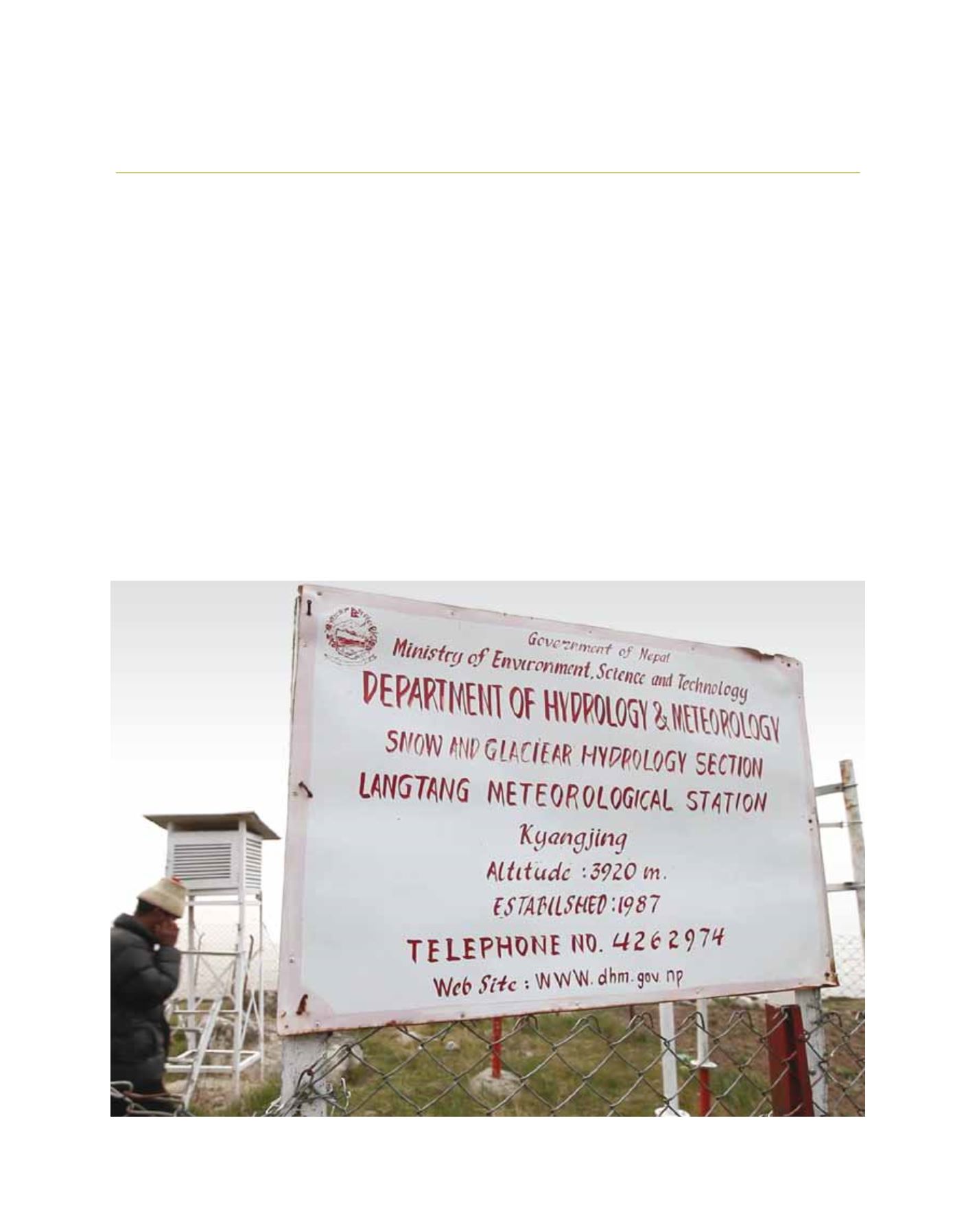

[
] 254
Building resilience to climate-related hazards
Pilot Program for Climate Resilience in Nepal and Yemen
T
he World Bank is helping the Governments of Nepal
(GoN) and Yemen (GoY) to increase their resilience to
climate change. In Nepal, the national hydrometeoro-
logical service (NMS) is the Ministry of Environment, Science
and Technology’s Department of Hydrology and Meteorology
(DHM); In Yemen, the NMS is the Civil Aviation Meteorology
Authority/Yemen Meteorological Service (CAMA/YMS). Aided
by the World Bank, these institutions are being strengthened
to improve essential weather, water and climate services. The
following account outlines the GoN and GoY projects, along
with details of further hydromet and climate information serv-
ices projects in Central Asia and Jamaica.
As in many of the least developed countries, Nepal’s DHM struggles
to maintain adequate staffing and cope with an extensive network
of manual observations, and cannot maintain 24/7
operations. Lacking extensive real-time data and upper
air observations, it has virtually no capacity to detect
and issue weather-related hazard warnings or identify
climate-related threats. As a result, there is relatively
little engagement with users, no explicit service deliv-
ery function, and no baseline from which to measure
service improvement.
In Yemen, the situation is slightly better. CAMA/YMS
focuses on 24/7 aviation weather services which are
provided on a cost recovery basis, and it provides basic
weather forecasts for the public and a variety of users.
The emphasis in Yemen is on extending the meteorolog-
ical and hydrological observing network and improving
hazardous weather warnings and climate forecasts. This
C
apacity
D
evelopment
The high altitude meteorological station operated by the Department of Hydrology and Meteorology in Nepal
Image: Stephan Bachenheimer
















